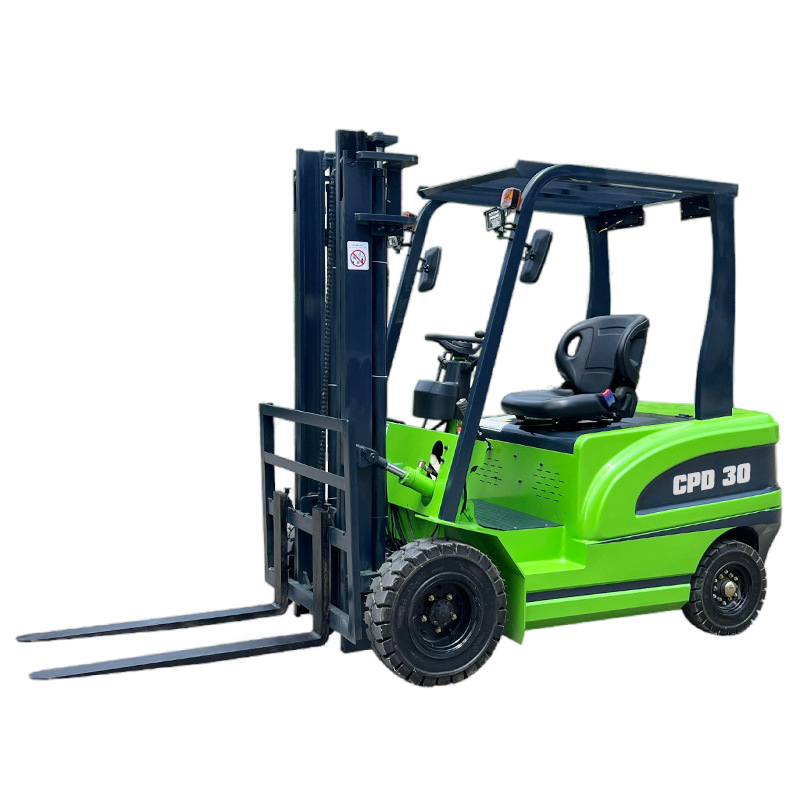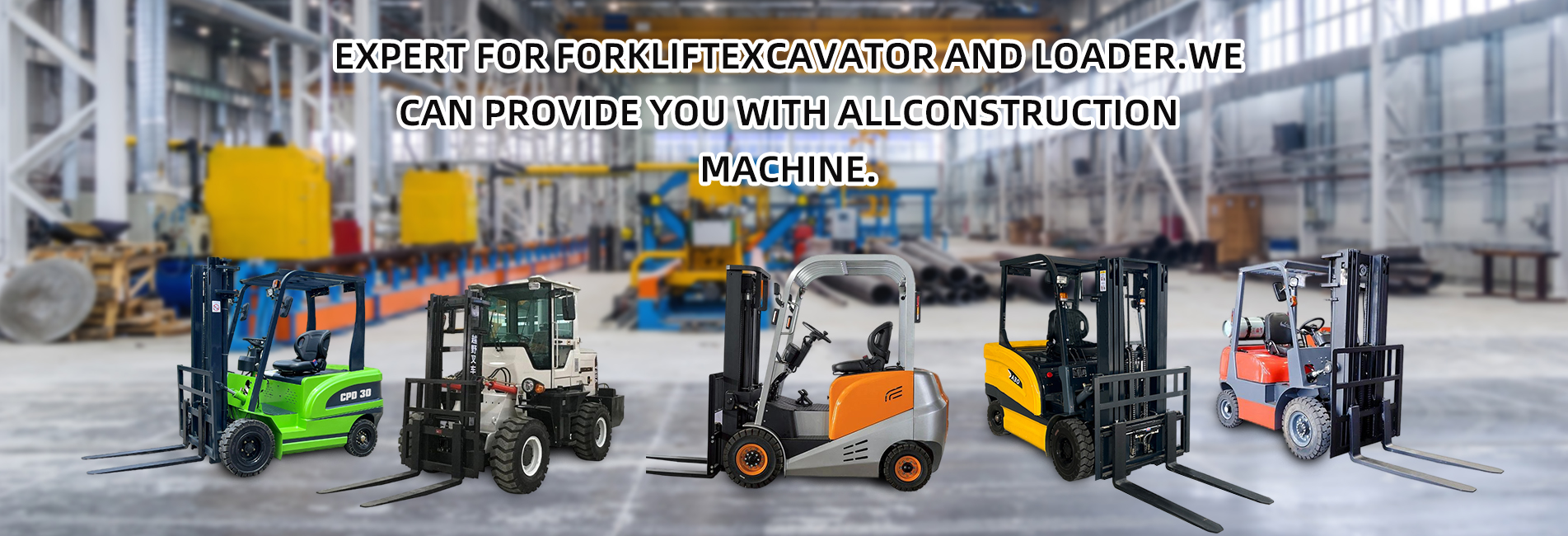The Battery System of Electric Forklifts
The battery system of an electric forklift is not a single cell, but an integrated unit composed of a battery body, a management module, and supporting components. The mainstream types are lead-acid batteries and lithium-ion batteries. These two types differ significantly in terms of structural materials and core logic, which directly determine the forklift's endurance, maintenance costs, and safety performance.

I. Traditional Mainstream: Structure of Lead-Acid Batteries (Still Used in Medium-Light Load, Low-Cost Scenarios)
Lead-acid batteries rely on the "lead-sulfuric acid" chemical reaction for charging and discharging. Their structure is centered on "liquid electrolyte + plate group" and requires regular maintenance. The specific breakdown is as follows:1. Core Functional Components (Determine Charging and Discharging Capabilities)
- Plate Group: Known as the "energy core" of the battery, it consists of multiple groups of positive and negative plates arranged alternately. The more plates there are, the larger the capacity.
- Positive Plates: The base material is lead-calcium alloy or lead-antimony alloy, with a surface coated with lead dioxide (PbO₂), which acts as the oxidizing agent during discharge.
- Negative Plates: The base material is the same as that of the positive plates, with a surface coated with spongy metallic lead (Pb), which serves as the reducing agent during discharge.
- Plate Structure: Adopts a "grid-like base material + active material coating". The grid must be corrosion-resistant, and the active material must adhere firmly (to prevent capacity degradation caused by falling off).
- Separator: Clamped between the positive and negative plates, its core function is to "prevent short circuits and allow ion passage".
- Material: Mostly made of microporous plastic (such as PVC) or rubber separators, with a porosity of over 80%. It allows hydrogen ions (H⁺) and sulfate ions (SO₄²⁻) in the electrolyte to pass through while preventing direct contact and short circuits between the positive and negative plates.
- Installation: A separator is required on both sides of each plate. Some heavy-load models use "pouch-type separators" (which wrap the negative plates) to further reduce the shedding of active materials.
- Electrolyte: Serves as the "medium" for the electricity storage reaction, formed by mixing concentrated sulfuric acid (H₂SO₄) with pure water in a certain proportion (usually with a density of 1.24-1.28g/cm³, which changes with the amount of electricity).
- Function: During discharge, sulfuric acid reacts with the active material of the plates to form lead sulfate (PbSO₄); during charging, the reaction proceeds in the reverse direction, restoring the activity of the plates and the density of the electrolyte.
2. Structural Protection Components (Ensure Safety and Durability)
- Battery Shell: The entire shell is made of acid-resistant and impact-resistant polypropylene (PP). The interior is divided into independent "cells" according to the number of plate groups (each cell has a voltage of approximately 2V, and multiple cells are connected in series to form the voltage required by the forklift, such as 24V/48V/80V).
- Key Design: A vent valve is installed on the top (hydrogen and oxygen are generated during charging and need to be discharged in a timely manner to prevent the shell from swelling; some models use one-way valves to prevent external impurities from entering).
- Terminal Posts: Serve as the "interface" for connecting the forklift circuit, made of lead alloy or tinned copper (low resistance and corrosion-resistant). They are divided into "post-type" (fixed by bolts) and "tab-type" (quick plug-in). The surface must be coated with petroleum jelly or anti-rust grease to prevent oxidation and leakage.
II. Current Mainstream: Structure of Lithium-Ion Batteries (Preferred for Heavy-Load, High-Frequency Operations)
Lithium-ion batteries (referred to as "lithium batteries" for short) rely on "lithium ion migration" for charging and discharging. Their core is "battery cells + BMS (Battery Management System)". They have no liquid electrolyte (or use solid/gel electrolytes), are maintenance-free, and have high efficiency. The mainstream types are lithium iron phosphate batteries (LiFePO₄) (safe) and ternary lithium batteries (LiNiCoMnO₂) (high energy density). The specific breakdown of their structure is as follows:1. Core Energy Unit: Battery Cell (Minimum Electricity Storage Unit)
The battery cell is the "basic unit" of a lithium battery, mostly in "cylindrical", "prismatic", or "pouch" shapes. A single cell has a voltage of approximately 3.2V (lithium iron phosphate) or 3.7V (ternary lithium). Battery packs are formed by "connecting cells in series to increase voltage and in parallel to increase capacity".Internal Structure of a Battery Cell (Taking a Prismatic Lithium Iron Phosphate Cell as an Example):- Positive Electrode: Uses aluminum foil as the base material, coated with lithium iron phosphate (LiFePO₄) + conductive agent + binder, and serves as the "source of lithium ions".
- Negative Electrode: Uses copper foil as the base material, coated with graphite + conductive agent + binder, and acts as the "storage for lithium ions".
- Diaphragm: Clamped between the positive and negative electrodes, it is a porous polyethylene (PE) or polypropylene (PP) film. It only allows lithium ions to pass through and blocks the flow of electrons (to prevent short circuits).
- Electrolyte: Mostly lithium-ion electrolyte (lithium salt + organic solvent, such as carbonates) or "solid electrolyte" (safer, no risk of leakage), which is responsible for the migration of lithium ions between the positive and negative electrodes.
2. Control Core: BMS (Battery Management System, the "Brain" of Lithium Batteries)
The BMS is a key differentiator of lithium batteries and directly determines their safety and lifespan. Composed of "hardware modules + software algorithms" and integrated inside the battery box, its main functions are divided into four categories:- Monitoring Function: Collects real-time data on the voltage and temperature of each battery cell, as well as the total current and total voltage of the entire battery pack, and calculates the state of charge (SOC) and state of health (SOH).
- Balancing Function: Reduces the voltage difference between cells through "active balancing" (transferring electricity using a small circuit) or "passive balancing" (consuming excess electricity using resistors) (to avoid overcharging of some cells and over-discharging of others, thereby extending the overall lifespan).
- Protection Function: Immediately cuts off the charging and discharging circuit in case of overcharging, over-discharging, overcurrent, overheating (e.g., exceeding 60℃), or short circuit; some high-end BMS also support "early warning" (e.g., prompting cooling when the temperature is close to the threshold).
- Communication Function: Communicates with the forklift controller and charger via the CAN bus, feeds back battery status (such as power level and fault codes), and enables "intelligent charging" (e.g., adjusting charging current according to SOC) and "forklift load/speed limitation" (e.g., limiting heavy loads when the power is low).
3. Structure and Protection: Battery Box and Cooling System
- Battery Box: The outer shell that holds the battery cells and BMS, made of high-strength aluminum alloy or cold-rolled steel plate. Its protection level must reach IP65 or above (dustproof and water-spray proof to adapt to humid or dusty warehouse environments).
- Internal Design: Battery cells are fixed with "brackets + buffer pads" to prevent cell displacement caused by vibration; an independent "explosion-proof chamber" is provided (if a cell undergoes thermal runaway, it can guide the gas to discharge and prevent the box from exploding).
- Cooling System: Lithium batteries are sensitive to temperature (optimal operating temperature: 15-35℃), so forced cooling is required in heavy-load or high-temperature environments:
- Air Cooling: Uses fans to discharge heat from the box. It has a simple structure and low cost, and is suitable for light-load and normal-temperature scenarios.
- Liquid Cooling: Uses cooling pipes (with cooling liquid inside) surrounding the battery cells to remove heat. It has uniform heat dissipation and high efficiency, and is suitable for heavy-load forklifts (e.g., over 10 tons) or high-temperature workshops (e.g., foundries).
III. Supporting Components of the Battery System (Indispensable "Auxiliary Units")
Both lead-acid and lithium batteries require supporting components to work normally. The core components include:1. Specialized Charger: Must match the battery type and cannot be mixed.
- Lead-Acid Charger: Adopts "three-stage charging" (constant current → constant voltage → trickle charging), with a power of mostly 10-30kW and a charging time of 8-10 hours.
- Lithium Battery Charger: Supports "fast charging protocols" (e.g., CC-CV charging), with a power of up to 50-100kW. Some models can be charged to 80% capacity in 30 minutes (requires the battery to support fast charging).
2. Battery Plugs and Wiring Harnesses
- Plugs: Use "high-current industrial plugs" (e.g., 50A/100A specifications) with anti-reverse insertion and anti-leakage designs (such as staggered contact layout and insulated shells).
- Wiring Harnesses: Use high-temperature resistant silicone wires or copper braided wires (low resistance and anti-aging), wrapped in flame-retardant sleeves to prevent short circuits and fires.
3. Power Indicator
Integrated into the forklift instrument, it intuitively displays the remaining power (e.g., percentage or "bars") through the SOC signal fed back by the BMS, reminding the driver to charge in a timely manner.IV. Structural Differences and Performance Correlation (Why Choose Lithium Batteries?)
| Comparison Dimension | Lead-Acid Batteries (Determined by Structure) | Lithium-Ion Batteries (Determined by Structure) |
|---|
| Maintenance Requirement | Regular water refilling (to make up for evaporated pure water) and electrolyte density testing | Maintenance-free (no liquid electrolyte, automatically managed by BMS) |
| Lifespan | 300-500 charge-discharge cycles (prone to degradation due to plate sulfation) | 1500-2000 charge-discharge cycles (BMS balances cells) |
| Safety Risks | Electrolyte leakage (corrodes forklift components), gas generation during charging | Overcharging/overheating risks (avoided by BMS + cooling system) |
| Weight and Installation | Heavy (e.g., 48V/500Ah weighs approximately 500kg, requiring forklift for handling) | Lightweight (only 1/3 the weight of lead-acid batteries with the same capacity, manageable manually) |
Summary
The core structure of an electric forklift battery lies in the "energy storage unit + control and protection unit": Lead-acid batteries rely on the traditional "plate-electrolyte" chemical reaction, featuring low cost but requiring maintenance; lithium batteries, with "battery cells + BMS" as the core, achieve maintenance-free operation, long lifespan, and high safety through intelligent control, making them the first choice for current heavy-load and high-frequency operation scenarios. When selecting a battery, it is necessary to consider the forklift's working conditions (such as load capacity, temperature, and charging time) and match the corresponding battery structure type.



